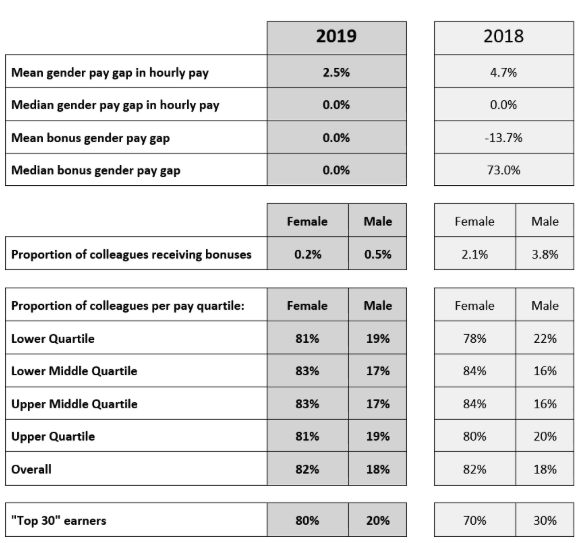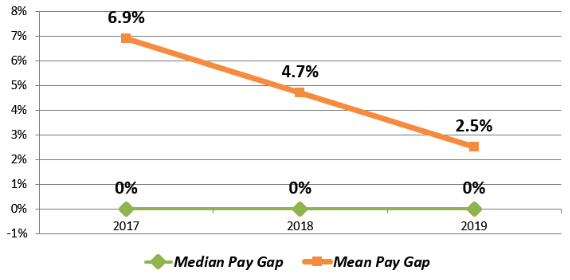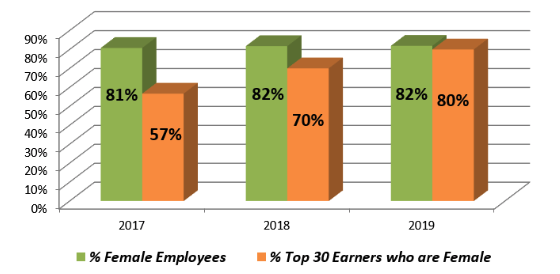
This is the fourth year that eXPD8 has submitted gender pay gap reporting, and the third time we have reported under the Government’s reporting requirements. The numbers shown above are as submitted to the government website, with last year’s submission alongside for comparison. Last year’s report can be found here.
Hourly Pay Gaps
The headline numbers quoted with regard to gender pay are those for hourly pay. The “mean” value calculates an average hourly rate for both male and female colleagues, whereas the “median” value is the mid-point pay rate for our colleagues.
In 2019, as in both 2018 and 2017, we are reporting a median pay gap of 0.0% – reflecting no difference in the hourly pay of our male and female colleagues earning at the mid-point level of our business. Last year we were one of only 8% of companies who were able to report no median pay gap, when the average overall median gap only reduced slightly to 9.6%.
As of April 2019, eXPD8 had a mean gender pay gap of 2.5%, in favour of male colleagues. This compares to the 4.7% differential in 2017 (a 47% reduction in the gap), and 6.9% in 2017.

We are pleased to report continued progress in eliminating any gender pay gap in our business. We monitor salaries at all levels to ensure that any differences are performance-based rather than gender-based and therefore we do not have a gender pay gap when it comes to colleagues within the same job banding. Our mean Gender Pay gap has been consistently reducing as we have increased the proportion of female colleagues in more senior positions. In 2017, 57% of our top 30 hourly rate colleagues were female. This increased to 70% in 2018, and has further increased to 80% in 2019. This compares with our overall workforce being 82% female.

Bonus Pay Gaps
Only a very small proportion of our colleagues received a bonus in the last financial year – 0.2% of our female colleagues and 0.5% of our male colleagues – both the mean and median gaps were 0%.
Pay Quartiles
We are required to publish the split of male and female colleagues in each pay quartile i.e. ranking colleagues by hourly rate then splitting into four equal parts (quartiles) and calculating the number of women and men in each quartile. The rankings across all quartiles are consistent with our overall gender split.
Whilst submission of 2019 numbers is not required until next April, eXPD8 is committed to reporting our information as soon as we can to ensure that it is as relevant and up to date as possible. We find it disappointing that the vast majority of companies choose to file their gender pay gap reporting only at the deadline, when readily available information is already a year out of date.
Paul Roffey
Group Finance & IT Director





